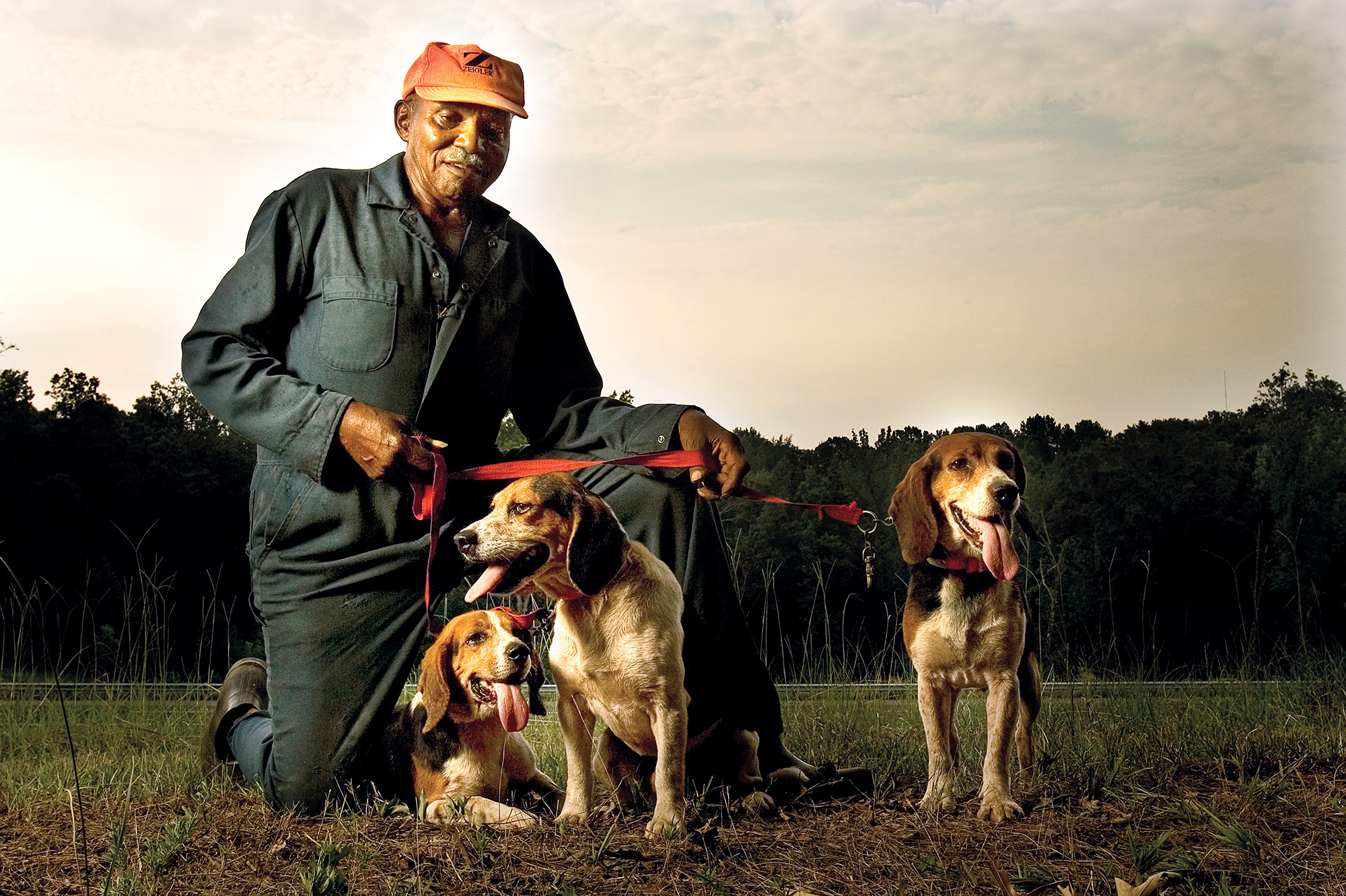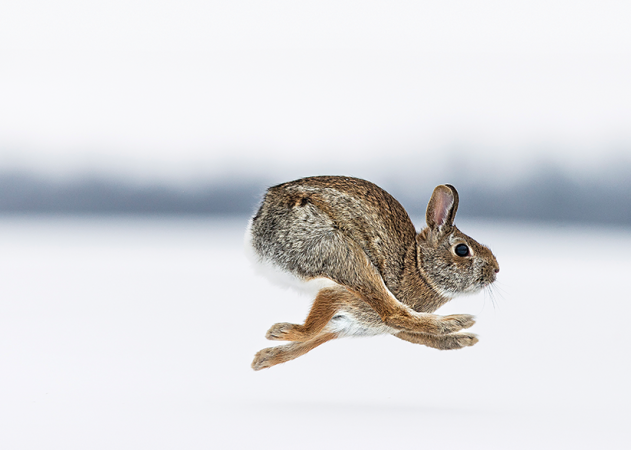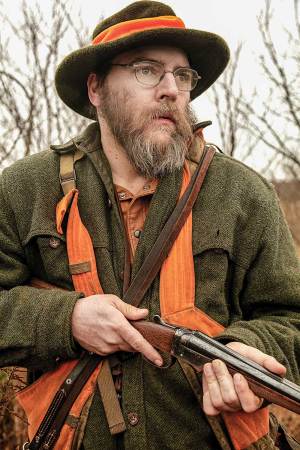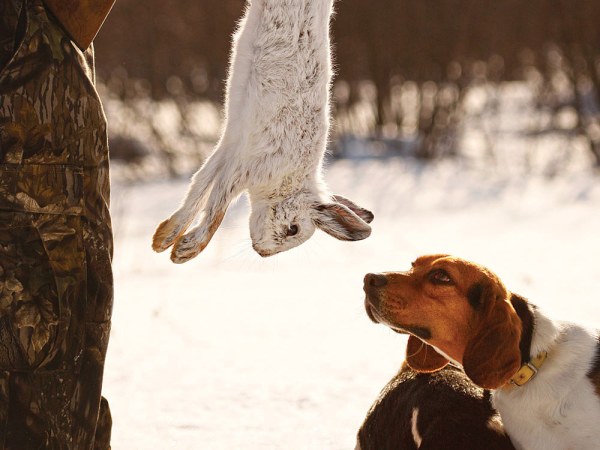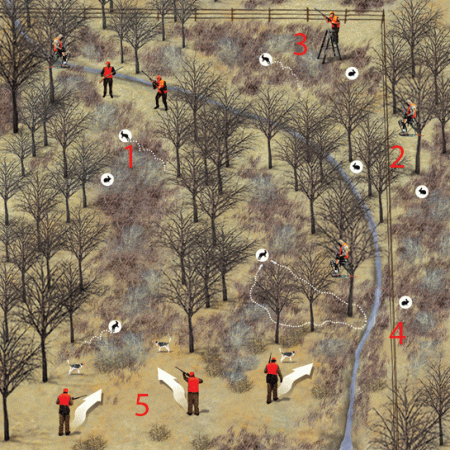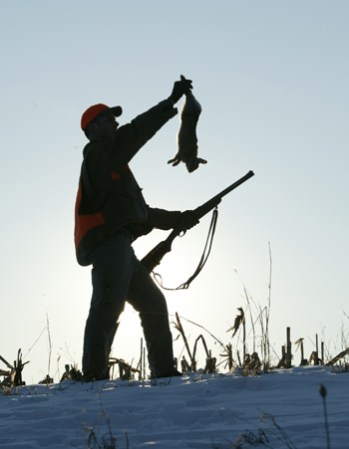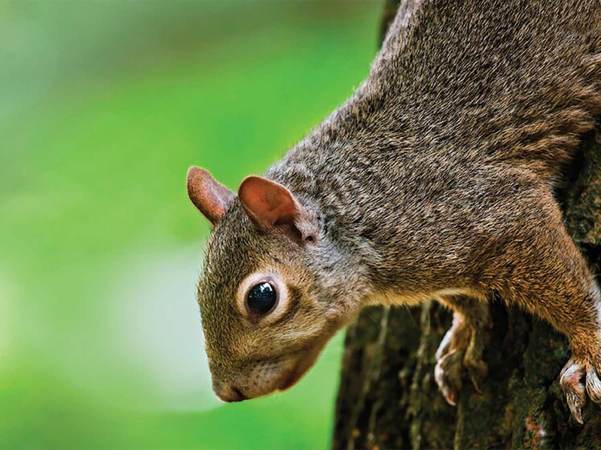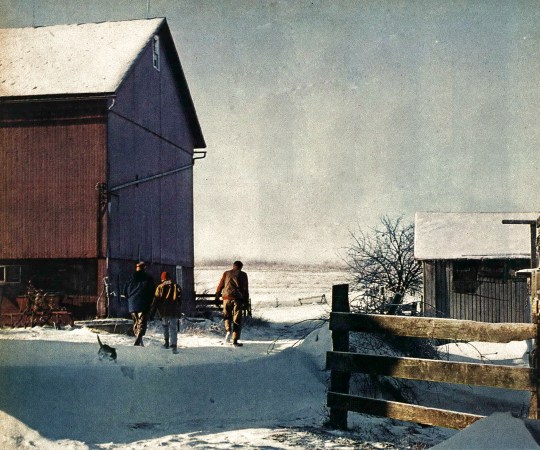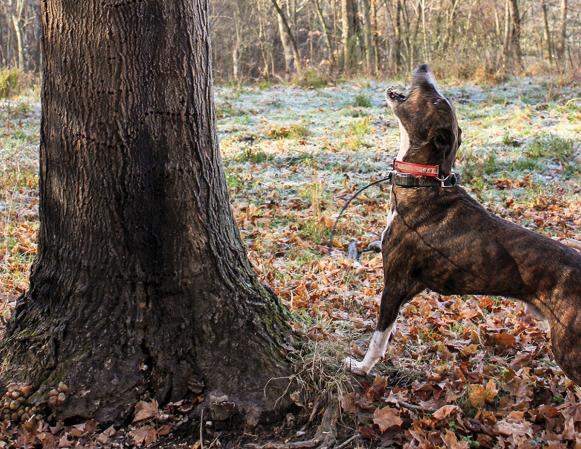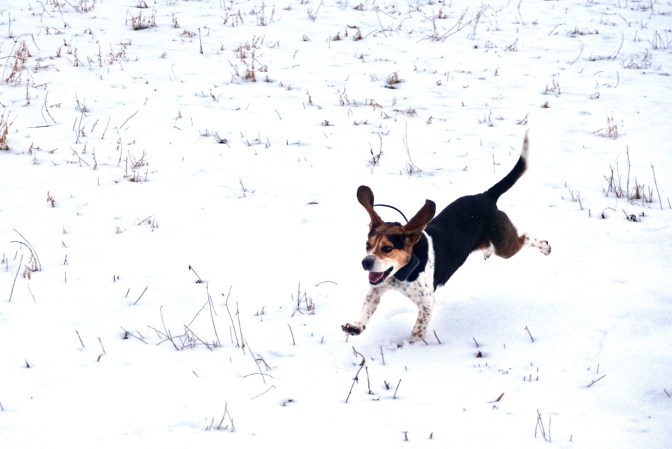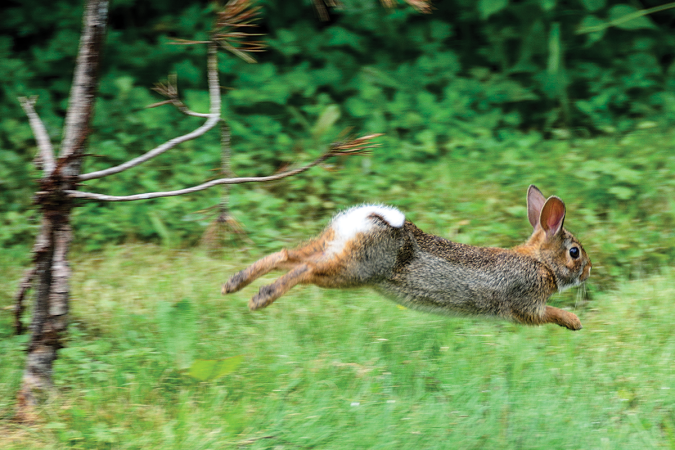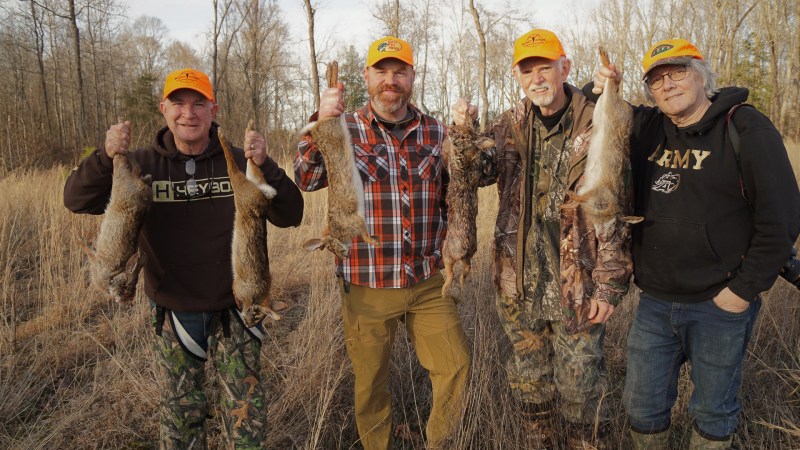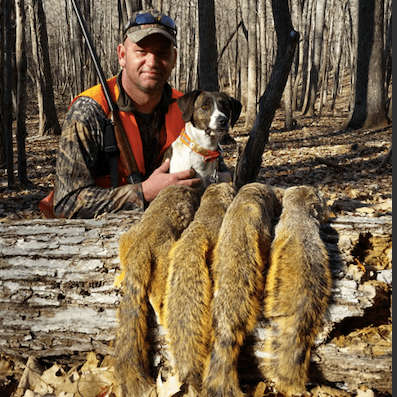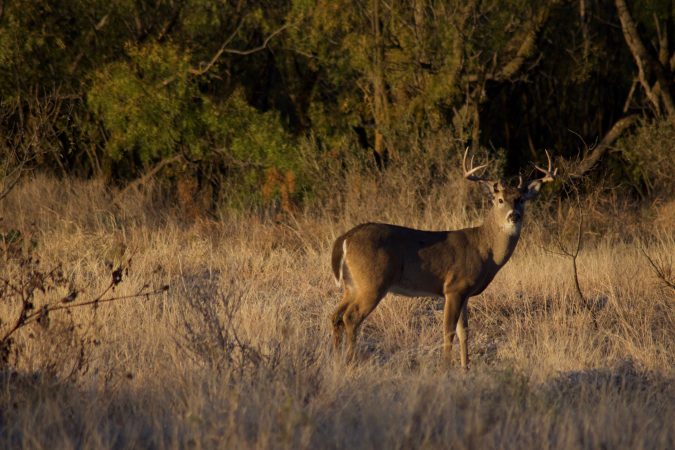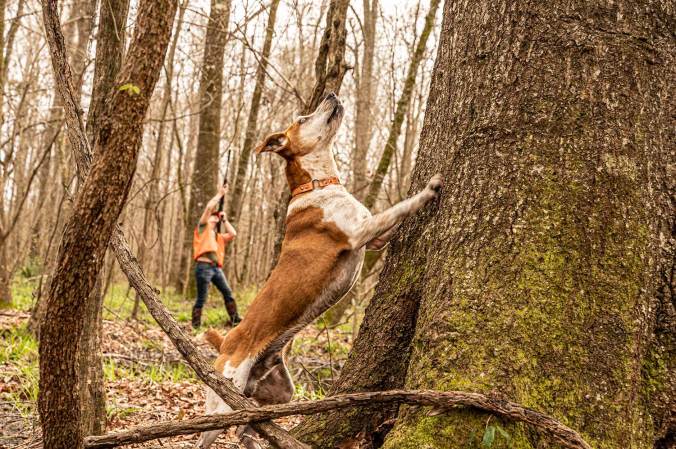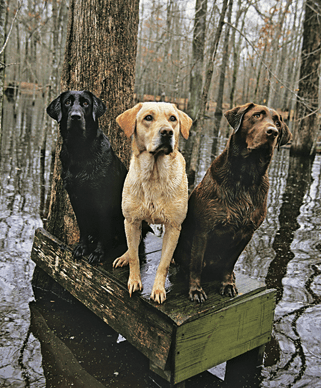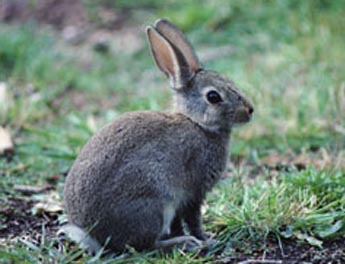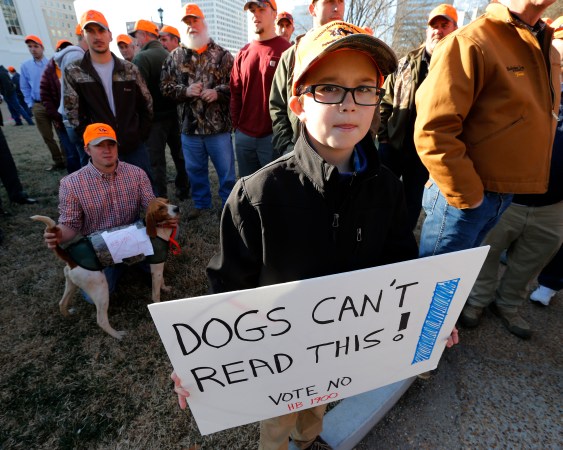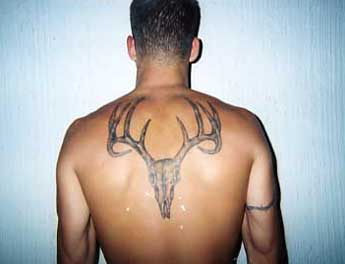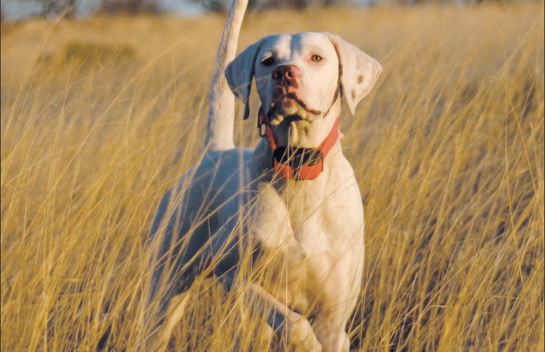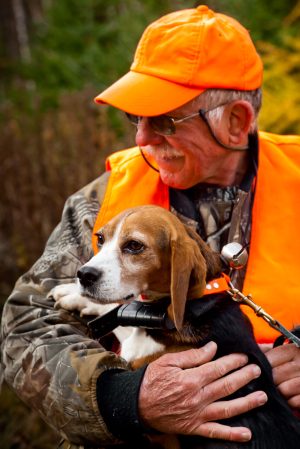Daniel Williams sits on the tailgate of his Chevrolet Silverado and leans against an empty dog box outside his mobile home in Greensboro, Alabama. ¶ “I’ve been thinking about getting me some more dogs,” the 67-year-old says. “But I don’t want to until I’ve got a place to hunt.” For now, at least, the box and the dog pen behind his home remain empty. It’s way too expensive to keep a pack of beagles and shoulder all of the necessary expenses—food, veterinary care—if he can’t hunt them regularly.
Williams isn’t alone. From 1963 to 1967, the first years for which Alabama has data, an average of more than 113,000 hunters harvested more than 1 million rabbits a year. By 2015, only 15,000 hunters pushed the briar patches and harvested fewer than 100,000 rabbits. Mississippi has seen similar precipitous drops, although the average harvest per hunter has remained fairly constant. Judging by these numbers, it’s clear that a style of hunting is in danger of disappearing. Many of the men who still preserve those traditions are aging and struggling with changing habitat, land use, and hunting practices.
Indeed, the habitat has changed. The same factors that led to the virtual disappearance of wild bobwhite quail have hurt rabbit numbers as well, particularly the small eastern cottontails that thrived in upland farm country. However, in some areas, rabbit populations remain healthy, so game scarcity does little to explain the decline in the number of rabbit hunters.
The reason for that dramatic shift more likely lies in the increase in the number of deer hunters that those same state surveys reveal. In the early 1960s, deer had yet to spread completely throughout Alabama. Now, with the state’s deer population at a robust 1.6 million whitetails, just about everybody has a chance to hunt deer, and the seasons run from mid-October until early February.
It wasn’t always that way, Williams recalls. On the edge of Greensboro is the “Thigpen place,” where Williams’ uncle, Robert Potts, lived and worked, tending beef cattle, milking dairy cows, and plowing fields, among assorted other duties. Not an easy life, but it had its perks.
On cold Saturdays in the fall and winter, Potts and seven or eight friends and relatives, including a young Daniel, would gather on the Thigpen place and hunt all day behind big black and tan dogs—not beagles—with names like Monk, Jack, Brownie, and Black Girl.
“I was so little, my uncle wouldn’t let me carry a shotgun,” Williams says. “We put the rabbits in a croaker sack. He let me carry the croaker sack.” When Williams was finally old enough to shoot, Potts gave him a beat-up old 12-gauge single shot. He still has it, with its cracks in the stock, mismatched screws in the trigger guard, and a surface so pitted the make and model have long been obscured.
“I still remember when I killed my first rabbit with it.” Williams says as he cradles the gun. “My uncle died when he was 96 years old, so that gun must be more than 100 years old—but it’ll still shoot those modern, high-powered shells.”
Williams relegated that gun to a closet long ago in favor of an old Sears & Roebuck pump with a Polychoke and a hand-carved stock. He had the run of the farm, which Williams guesses was about 1,000 acres. And it wasn’t just there either.
TRADITION IN TRANSITION
During the late 19th and 20th centuries, rabbit hunting was almost the sole province of black hunters in the Deep South’s plantation regions like the Black Belt and the Mississippi Delta. While white hunters made quail king, scoured the hardwood swamps for squirrels, and organized dove shoots and deer drives, black hunters gathered to chase cottontails.
Today, according to the U.S. Fish and Wildlife Service’s National Survey of Fishing, Hunting and Wildlife-Associated Recreation, although the number of black hunters has increased during the last 25 years—from an estimated 294,000 to 297,000—they still make up only 3 percent of the total hunting population. That’s well out of proportion to their 13.2 percent representation in the overall population. In the days of segregation, rabbit hunting provided some common ground between the races. Black tenant farm families became de facto babysitters for the children of white landowners. With hundreds of acres of farmland to entertain their charges, black men and women passed along rabbit-hunting skills to the white kids in their care.
“I still remember the first rabbit I ever killed,” says T.M. Culpepper, whose family owned land north of Demopolis, Alabama. “A woman who worked on a farm showed me how to spot one in its bed. She said, ‘Look for the eye.’ They are perfectly camouflaged, but if you know what to look for, you can see the eye—and I did. When I was in Alaska, I used what she taught me and I killed a lot of snowshoe rabbits up there.”
As long as his uncle worked on the Thigpen place, Daniel Williams and the men he hunted with had little reason to go elsewhere.
“There were so many rabbits there, we didn’t have to go nowhere else,” he says.
But when they did, they rarely, if ever, ran into posted land.
“We went anywhere we wanted to and nobody cared,” Williams says. “It was all white people’s land. They were all interested in quail and deer, and we didn’t care nothing about that.”
John L. Williams—who is a friend of Daniel Williams’ but not related—grew up on a farm in rural Hale County, south of Tuscaloosa. The overgrown fencerows around the corn and cotton fields, and the fallow fields with their blackberry patches, harbored small eastern cottontails. And the nearby hardwood swamps were home to swamp rabbits, or “cane cutters.” John Williams, now “near ’bout 90 years old,” could walk out of his family’s home and begin hunting at the edge of the backyard.
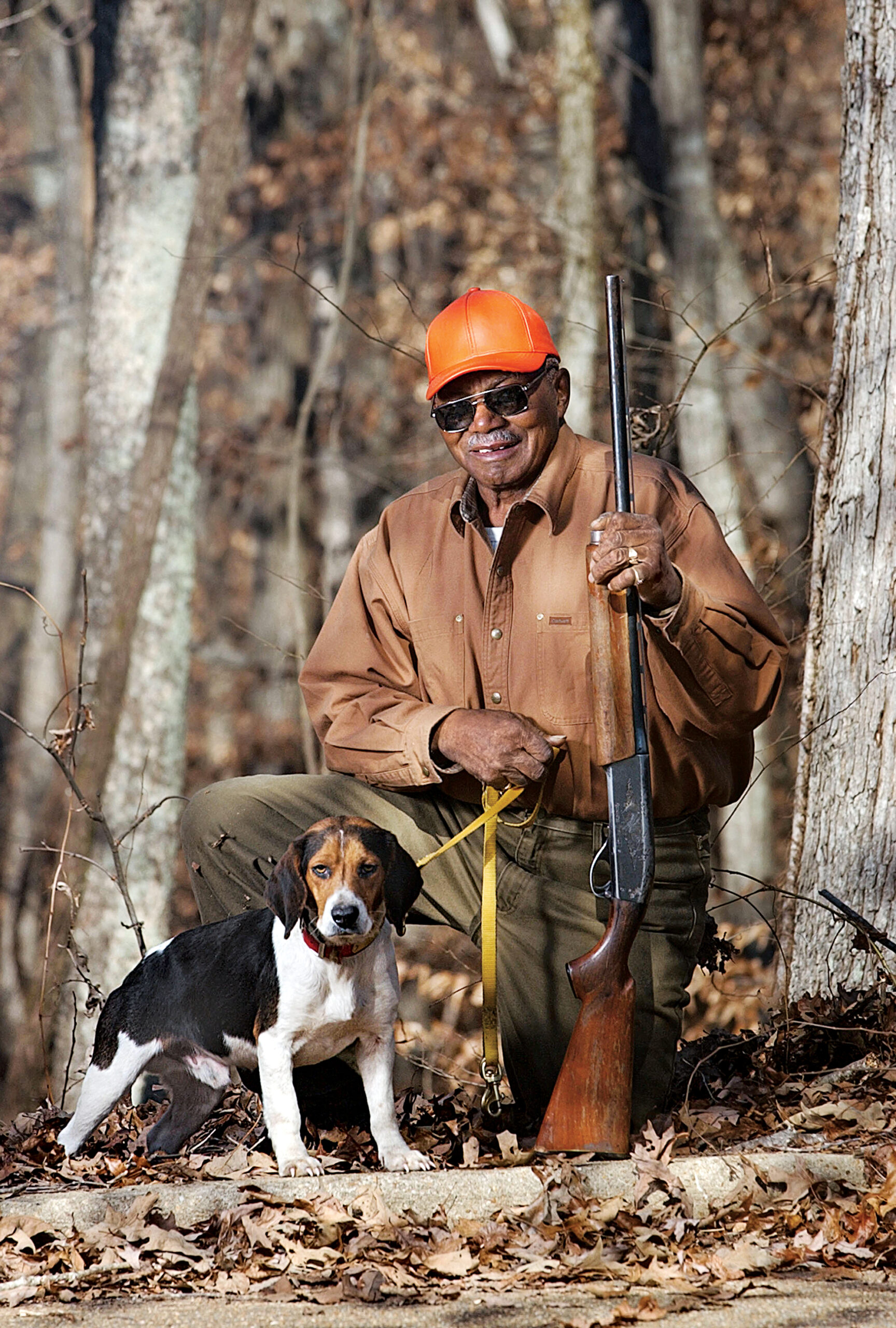
“I’ve rabbit hunted all of my life,” John Williams says as he walks slowly toward his dog pen in the suburban area just below Tuscaloosa where he now lives. “I love to hear the dogs run. I could hunt all day.”
Like Daniel Williams, John can remember going hunting without a gun. He was too poor to own one as a youth, but he wasn’t content just to carry a burlap sack filled with other hunters’ rabbits. He found a suitable stick, slipped an old lug nut off of a tractor wheel over it, and fashioned a “tap stick.” It worked a lot like a one-way boomerang. With one end weighted, it spun and swept a broad path. Once the dogs jumped a rabbit, he knew from hearing where the race had started where the rabbit was likely to emerge into the open. He took his position at a strategic location, where the fence reached a road or at the end of a cotton field, and waited.
“Pretty soon he’d come out,” John says with a smile. “I could throw that tap stick and hit him with it. It might not kill him right off, but it would break him down to where I could go over and get him.”
It was fun, but it was also food. The succulent white meat of a cottontail was fine eating for John and his family. Today Williams, who is recovering from a stroke, has his own 500-acre farm near where he grew up. He reaches into the pen and rubs the heads of eager-looking tri-color beagles and tells them to settle down. You don’t have to talk to him long before he brings up Hustle, “the best dog ever.” Hustle is gone now, but that dog’s grandson is still part of John Williams’ pack.
He can take his dogs to his farm anytime he pleases. And he’s fortunate to have a place of his own. After a long career at Central Foundry in Tuscaloosa, he opened People’s Shoe Renewal. And anybody who was anybody, from University of Alabama football coach Paul W. “Bear” Bryant to U.S. Sen. Richard Shelby, bought shoes from him or took them to his shop for repairs. Williams got to know people, and that landed him invitations to hunt on some of the best land in western Alabama.
“You have to know folks like I know folks,” John Williams says. “I have a lot of people who call me to hunt on their land.” He’s also fortunate to have family who helps him get around and handle his dogs.
“I hunt a little bit,” he says. “I can’t hunt like I used to, but I still love it.”
Daniel Williams, unfortunately, hasn’t got any younger hunters to rely on. Arthritis in his legs makes it difficult for him to get around. And when his wife became ill with cancer, the couple spent everything they had on her treatments, which lasted until her death three years ago. He doesn’t have a lot of spare money to lease land or keep up a beagle pack.
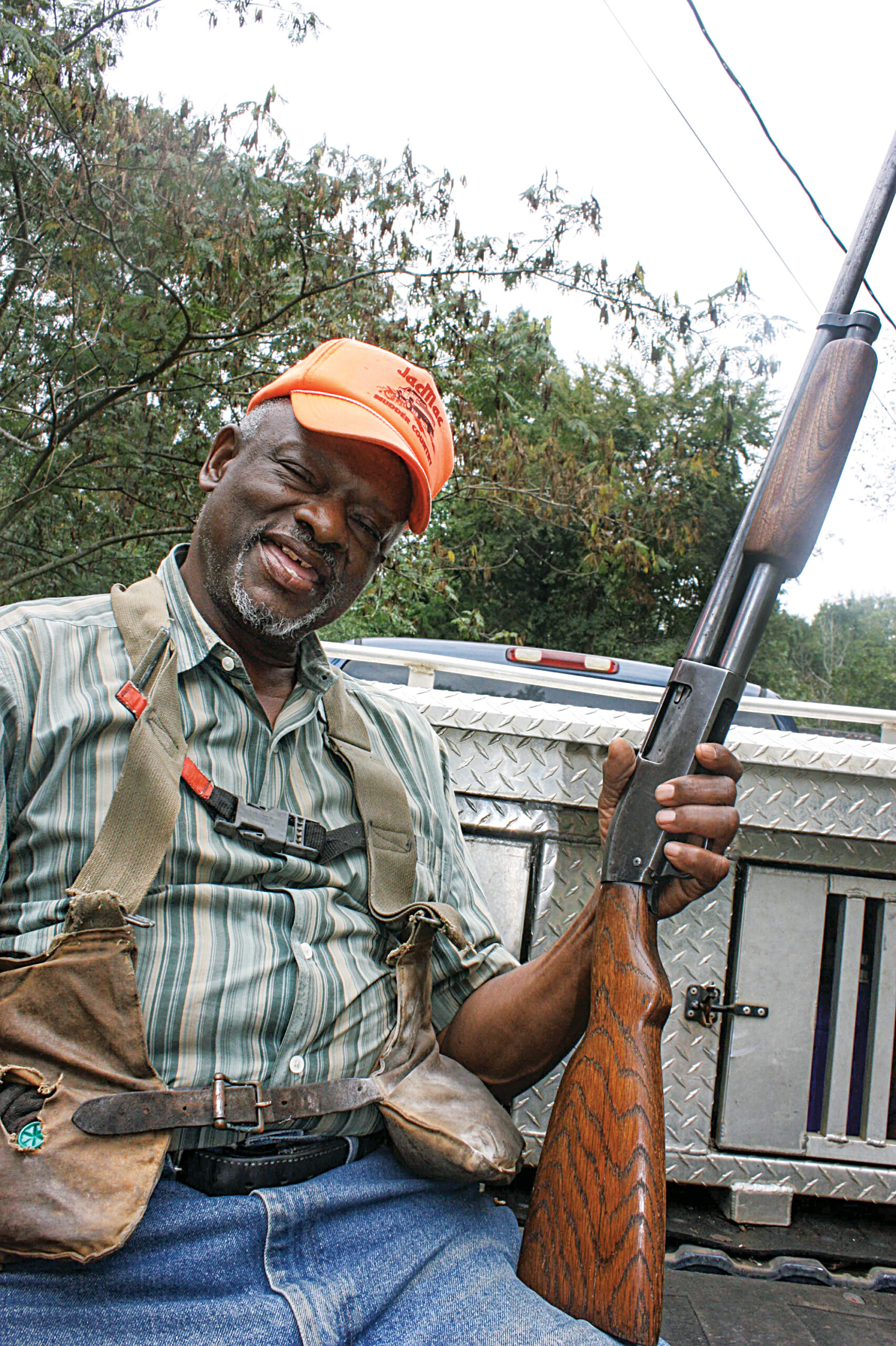
DEER EXCHANGE
For rabbit hunters, it all went bad in the 1980s, as the deer population grew and hunters began to lease land. Deer-hunting practices changed, too. Until the 1970s, deer hunting in the South was mostly done with shotguns and buckshot on deer drives. Hunters gathered on weekends in groups of 30 to 40 and used dogs to push deer out of briars and downed treetops in the hardwood swamps. That meant deer hunting was confined to a few weekends a year in the deep woods. Weekdays and open farmland were left to other hunters.
But as deer hunters shifted to treestand ambushes and hunting over food plots, it became more and more common for them to lease land exclusively for deer hunting. That was what eventually drove Bob Hagler out of rabbit hunting. Now 77 years old, Hagler hasn’t had dogs in about 15 years. Unlike Daniel Williams and John Williams, he didn’t grow up rabbit hunting. But when he moved back to his native Tuscaloosa from Akron, Ohio, to work at the B.F. Goodrich tire plant, friends and co-workers got him into the sport. He started out hunting with friends and then got his own dogs. The sport quickly became an obsession.
“You know you’re in the business when your veterinarian sends you a Christmas card every year,” Hagler says with a laugh. “Your dogs go to the doctor more than you do.”
The problem was that Hagler was spending more and more on hunting and had fewer and fewer places to go. Beagle pack owners spend time and money on shock collars to train their dogs not to run deer. There are so many deer throughout much of the Deep South that it is virtually impossible for dogs not to cross their trail. If they aren’t broken from running deer, rabbit hunting will quickly grind to a halt. But rabbit hunters have a difficult time convincing deer hunters that their rabbit dogs won’t run deer. Deer hunters don’t want dogs on their land during deer season for fear of spooking the whitetails, and that leaves rabbit hunters on the outside looking in.
Rabbit hunters could lease land like deer hunters, and some do. But it’s not quite that simple. Rabbits require more specific habitat than deer. And a beagle pack that starts on a hunter’s private land can wind up on his neighbors’ property. There’s no better way to create conflict with neighboring deer hunters than for a pack of dogs to cross their land while they’re hunting.
“The little places we had to hunt before and during deer season were overhunted,” Hagler says. “People were making money by renting their land to deer hunters.” Public land can be hunted during deer season, and many small-game hunters use it. But there is a lot of hunting pressure on public lands, and rabbit-hunting parties don’t want to stumble over each other. Also, many wildlife management areas are managed with deer in mind, not small game. Fred Harders, assistant director of the Alabama Wildlife and Freshwater Fisheries Division, notes that when the state got land for its Lowndes County WMA, the property had rabbit habitat.
“When the state first got it, it was outstanding for rabbit hunting,” says Harders. “But trees were planted and habitat changed. That successional habitat that rabbits used disappeared. If the habitat isn’t there, the rabbits won’t be there. If the rabbits aren’t there, the hunters won’t be there.”
In the end, expense, lack of opportunity, and age are taking their toll on the rabbit-hunting traditions among black hunters in the Deep South. John Williams is fortunate to have a son and a nephew who hunt with him. But younger men never joined in the circle that Hagler and Daniel Williams hunted with. Hunters with dogs usually had a regular crew that hunted with them. Hagler knew of 10 or 12 such crews around Tuscaloosa when he was hunting; now he knows of two. “Most of them are deceased now,” Hagler says of his former companions. “The younger people, they’ve got the electronics. They’re not interested in hunting. If they didn’t have anybody who showed them the fun in it, they don’t have any interest.”
Hagler wishes more people did take interest and the sport would live on. He hasn’t forgotten the fun and fellowship of taking the field with an eager pack of beagles on a cold winter morning.
